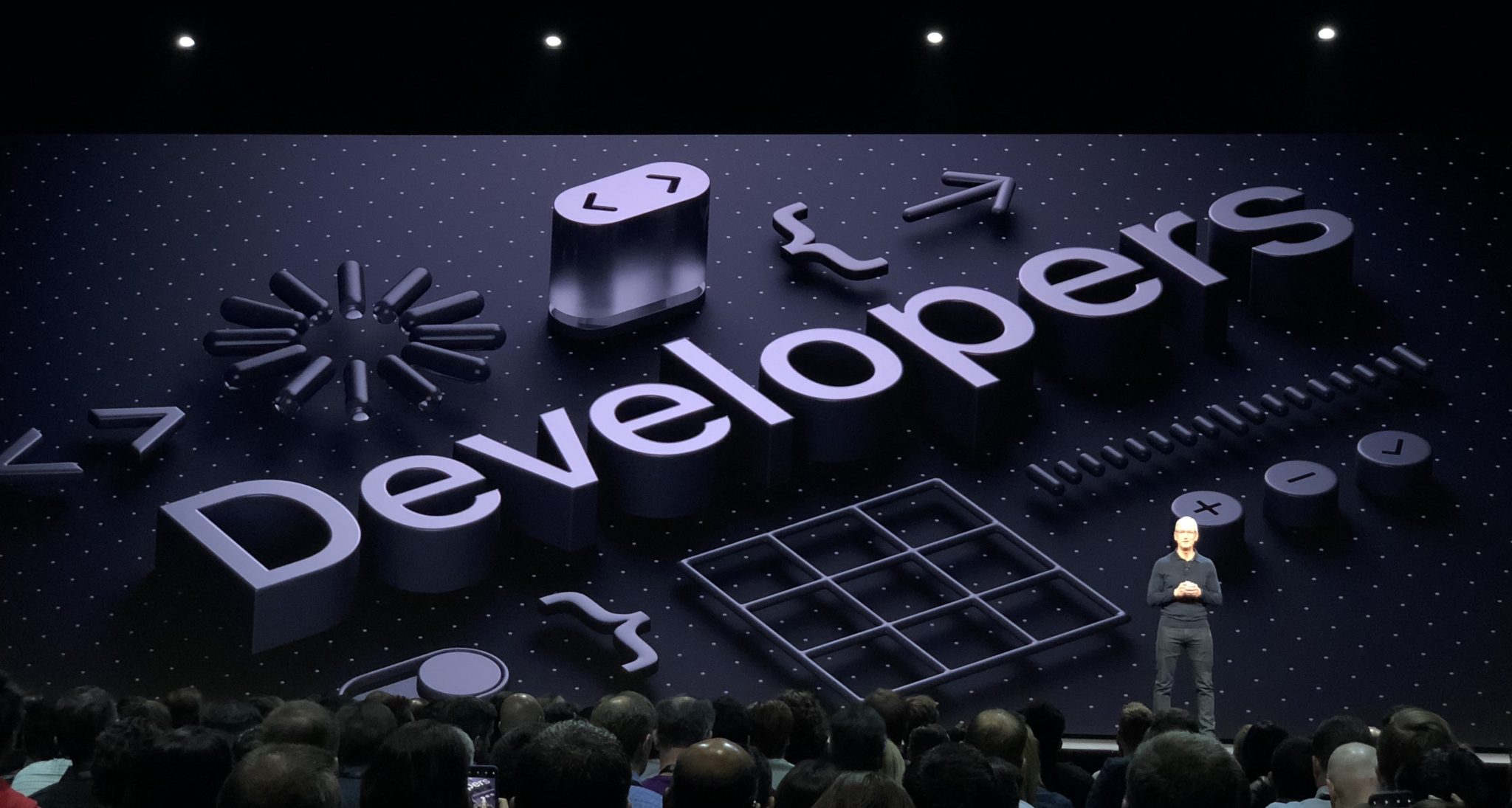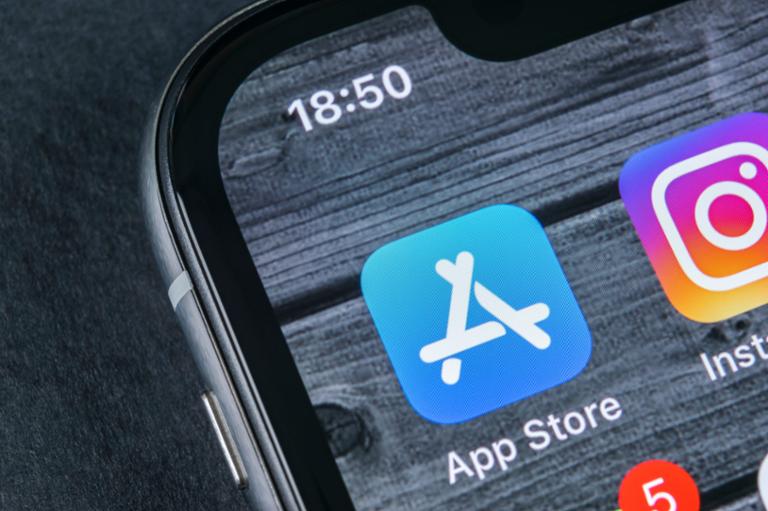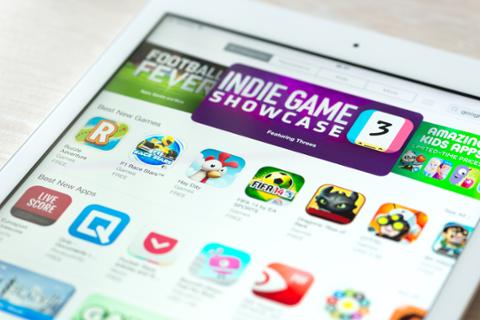 Developers are also finding different routes to subscription success. Instead of all-or-nothing access, some apps allow for annual subscriptions with a sort of blockchain approach (i.e., you can only build on top of what you've previously established). For example, if you purchased a subscription today, you’d have access to all features currently available in the app; if additional features are made available next year, you’d have to re-up to access those new goodies. There’s also a sweet spot for pricing. A 2017 study suggests most subscription apps are priced incorrectly, depending on genre. People will pay handsomely for a dating app, but your fancy note-taking app... not so much. Even apps considered critical, such as 1Password, have detractors about their subscription model. Oft-grumpy pundit John Gruber of Daring Fireball writes: “Up front paid apps are going the way of the dodo.” It’s a gross exaggeration, but hints at a changing app economy. Television was once totally free – then came cable programming. You can still get legacy, free network television programming, but it’s just not most folks' first option in this day and age. Paid apps, like "old" TV, won’t go away. Charging $1 for an app will always be an option because developers will always have a one-off idea for an app. A simple side-scroller (maybe a passion project!) with a finite number of levels or an app that stitches screenshots together will never be worth a monthly subscription on its own. Subscriptions don't always work. Ads are another path to income, but aren’t applicable to every type of app. Apple reports 300 million users pay for subscriptions of some sort, including services such as Apple Music and iCloud. Apple will also tell you developers have made over $100 billion from the App Store, but it won't break down how much of that income is through subscriptions. Until we see evidence that subscriptions are eclipsing ads and paid apps, the "dodo" of apps with up-front payments still lives.
Developers are also finding different routes to subscription success. Instead of all-or-nothing access, some apps allow for annual subscriptions with a sort of blockchain approach (i.e., you can only build on top of what you've previously established). For example, if you purchased a subscription today, you’d have access to all features currently available in the app; if additional features are made available next year, you’d have to re-up to access those new goodies. There’s also a sweet spot for pricing. A 2017 study suggests most subscription apps are priced incorrectly, depending on genre. People will pay handsomely for a dating app, but your fancy note-taking app... not so much. Even apps considered critical, such as 1Password, have detractors about their subscription model. Oft-grumpy pundit John Gruber of Daring Fireball writes: “Up front paid apps are going the way of the dodo.” It’s a gross exaggeration, but hints at a changing app economy. Television was once totally free – then came cable programming. You can still get legacy, free network television programming, but it’s just not most folks' first option in this day and age. Paid apps, like "old" TV, won’t go away. Charging $1 for an app will always be an option because developers will always have a one-off idea for an app. A simple side-scroller (maybe a passion project!) with a finite number of levels or an app that stitches screenshots together will never be worth a monthly subscription on its own. Subscriptions don't always work. Ads are another path to income, but aren’t applicable to every type of app. Apple reports 300 million users pay for subscriptions of some sort, including services such as Apple Music and iCloud. Apple will also tell you developers have made over $100 billion from the App Store, but it won't break down how much of that income is through subscriptions. Until we see evidence that subscriptions are eclipsing ads and paid apps, the "dodo" of apps with up-front payments still lives. Apple Drove the App Economy to Subscriptions: Report
Just over a decade ago, a $999 app named ‘I Am Rich’ debuted in the App Store. People actually bought it. These days, however, it seems that people are giving up paying for apps up-front, whether priced at $999 or $0.99. A report from Business Insider offers a possible reason behind the App Store's shift from up-front payments to subscriptions and micro-transactions. In April 2017, various developers were invited to a meeting with Apple in New York City to discuss App Store economics. At that meeting, the developers were reportedly told that paid apps accounted for roughly 15 percent of total app sales, and falling. Apple’s solution: transform one-time, up-front payments into recurring subscription charges. So instead of paying $5 up-front for an app, a user might be charged $1 per month, with the added sweetener of updates and new features. After five months, a developer would ‘break even’ on the new monetization scheme versus the old format. Anything over half a year would be pure profit. At WWDC 2017, Apple debuted the new-look iOS App Store and held a session on subscriptions titled “Designing for Subscription Success.” Developers were encouraged to climb aboard. To sweeten the current subscription deal, Apple also reduces its 30 percent cut to 15 percent for any subscription lasting over 12 months. If a developer can create an app with a sustainable business model, they can focus on that one app rather than publishing multiple new concepts, some of which will surely fail. The latter scenario is how the App Store ended up with so many ‘zombie’ apps. As we’ve noted, the subscription model may encourage creativity and pragmatism from app developers, who can simply launch a subscription and continue fleshing their existing app out.  Developers are also finding different routes to subscription success. Instead of all-or-nothing access, some apps allow for annual subscriptions with a sort of blockchain approach (i.e., you can only build on top of what you've previously established). For example, if you purchased a subscription today, you’d have access to all features currently available in the app; if additional features are made available next year, you’d have to re-up to access those new goodies. There’s also a sweet spot for pricing. A 2017 study suggests most subscription apps are priced incorrectly, depending on genre. People will pay handsomely for a dating app, but your fancy note-taking app... not so much. Even apps considered critical, such as 1Password, have detractors about their subscription model. Oft-grumpy pundit John Gruber of Daring Fireball writes: “Up front paid apps are going the way of the dodo.” It’s a gross exaggeration, but hints at a changing app economy. Television was once totally free – then came cable programming. You can still get legacy, free network television programming, but it’s just not most folks' first option in this day and age. Paid apps, like "old" TV, won’t go away. Charging $1 for an app will always be an option because developers will always have a one-off idea for an app. A simple side-scroller (maybe a passion project!) with a finite number of levels or an app that stitches screenshots together will never be worth a monthly subscription on its own. Subscriptions don't always work. Ads are another path to income, but aren’t applicable to every type of app. Apple reports 300 million users pay for subscriptions of some sort, including services such as Apple Music and iCloud. Apple will also tell you developers have made over $100 billion from the App Store, but it won't break down how much of that income is through subscriptions. Until we see evidence that subscriptions are eclipsing ads and paid apps, the "dodo" of apps with up-front payments still lives.
Developers are also finding different routes to subscription success. Instead of all-or-nothing access, some apps allow for annual subscriptions with a sort of blockchain approach (i.e., you can only build on top of what you've previously established). For example, if you purchased a subscription today, you’d have access to all features currently available in the app; if additional features are made available next year, you’d have to re-up to access those new goodies. There’s also a sweet spot for pricing. A 2017 study suggests most subscription apps are priced incorrectly, depending on genre. People will pay handsomely for a dating app, but your fancy note-taking app... not so much. Even apps considered critical, such as 1Password, have detractors about their subscription model. Oft-grumpy pundit John Gruber of Daring Fireball writes: “Up front paid apps are going the way of the dodo.” It’s a gross exaggeration, but hints at a changing app economy. Television was once totally free – then came cable programming. You can still get legacy, free network television programming, but it’s just not most folks' first option in this day and age. Paid apps, like "old" TV, won’t go away. Charging $1 for an app will always be an option because developers will always have a one-off idea for an app. A simple side-scroller (maybe a passion project!) with a finite number of levels or an app that stitches screenshots together will never be worth a monthly subscription on its own. Subscriptions don't always work. Ads are another path to income, but aren’t applicable to every type of app. Apple reports 300 million users pay for subscriptions of some sort, including services such as Apple Music and iCloud. Apple will also tell you developers have made over $100 billion from the App Store, but it won't break down how much of that income is through subscriptions. Until we see evidence that subscriptions are eclipsing ads and paid apps, the "dodo" of apps with up-front payments still lives.
 Developers are also finding different routes to subscription success. Instead of all-or-nothing access, some apps allow for annual subscriptions with a sort of blockchain approach (i.e., you can only build on top of what you've previously established). For example, if you purchased a subscription today, you’d have access to all features currently available in the app; if additional features are made available next year, you’d have to re-up to access those new goodies. There’s also a sweet spot for pricing. A 2017 study suggests most subscription apps are priced incorrectly, depending on genre. People will pay handsomely for a dating app, but your fancy note-taking app... not so much. Even apps considered critical, such as 1Password, have detractors about their subscription model. Oft-grumpy pundit John Gruber of Daring Fireball writes: “Up front paid apps are going the way of the dodo.” It’s a gross exaggeration, but hints at a changing app economy. Television was once totally free – then came cable programming. You can still get legacy, free network television programming, but it’s just not most folks' first option in this day and age. Paid apps, like "old" TV, won’t go away. Charging $1 for an app will always be an option because developers will always have a one-off idea for an app. A simple side-scroller (maybe a passion project!) with a finite number of levels or an app that stitches screenshots together will never be worth a monthly subscription on its own. Subscriptions don't always work. Ads are another path to income, but aren’t applicable to every type of app. Apple reports 300 million users pay for subscriptions of some sort, including services such as Apple Music and iCloud. Apple will also tell you developers have made over $100 billion from the App Store, but it won't break down how much of that income is through subscriptions. Until we see evidence that subscriptions are eclipsing ads and paid apps, the "dodo" of apps with up-front payments still lives.
Developers are also finding different routes to subscription success. Instead of all-or-nothing access, some apps allow for annual subscriptions with a sort of blockchain approach (i.e., you can only build on top of what you've previously established). For example, if you purchased a subscription today, you’d have access to all features currently available in the app; if additional features are made available next year, you’d have to re-up to access those new goodies. There’s also a sweet spot for pricing. A 2017 study suggests most subscription apps are priced incorrectly, depending on genre. People will pay handsomely for a dating app, but your fancy note-taking app... not so much. Even apps considered critical, such as 1Password, have detractors about their subscription model. Oft-grumpy pundit John Gruber of Daring Fireball writes: “Up front paid apps are going the way of the dodo.” It’s a gross exaggeration, but hints at a changing app economy. Television was once totally free – then came cable programming. You can still get legacy, free network television programming, but it’s just not most folks' first option in this day and age. Paid apps, like "old" TV, won’t go away. Charging $1 for an app will always be an option because developers will always have a one-off idea for an app. A simple side-scroller (maybe a passion project!) with a finite number of levels or an app that stitches screenshots together will never be worth a monthly subscription on its own. Subscriptions don't always work. Ads are another path to income, but aren’t applicable to every type of app. Apple reports 300 million users pay for subscriptions of some sort, including services such as Apple Music and iCloud. Apple will also tell you developers have made over $100 billion from the App Store, but it won't break down how much of that income is through subscriptions. Until we see evidence that subscriptions are eclipsing ads and paid apps, the "dodo" of apps with up-front payments still lives. 

